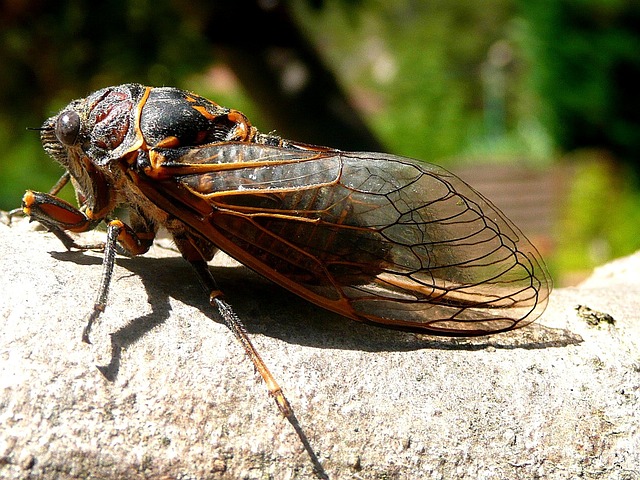Introduction
Cicadas, those enigmatic creatures, have fascinated scientists and nature enthusiasts for centuries. With their distinctive buzzing sounds filling the air during certain seasons, these insects hold a unique place in the natural world.
Table of Contents
Beyond their unmistakable hum, cicadas play vital roles in ecosystems. Understanding their scientific intricacies and behaviors contributes to a deeper appreciation of the delicate balance within our environment.
Scientific Name
Cicadas belong to the order Hemiptera and the family Cicadidae. Their scientific name, Cicadoidea, encompasses a diverse species that share common characteristics but exhibit intriguing variations.
Types of Cicadas
Cicadas come in various types, each with its distinct features and geographical preferences. From the periodical cicadas that emerge in cycles to the annual species, the diversity within the Cicadoidea family is awe-inspiring.
Evolutionary Journey
Historical Background
The evolutionary journey of cicadas spans millions of years. Fossil records reveal their existence dating back to ancient times, showcasing their resilience and adaptability in the face of environmental changes.
Noteworthy Evolutionary Adaptations
Surviving through epochs, cicadas have developed unique adaptations, such as specialized mouthparts for feeding and powerful mechanisms for producing their characteristic sounds. These adaptations have contributed to their success as a species.
Behavioral Patterns
Intriguing Cicada Behaviors
Cicadas exhibit fascinating behaviors, including synchronized emergences, intricate mating rituals, and the orchestration of their chorus-like sounds. These behaviors are crucial for their survival and reproductive success.
Impact of Environmental Factors on Behavior
Environmental conditions significantly influence cicada behavior. Factors like temperature and humidity are pivotal in determining when and how these insects emerge, mate, and fulfill their ecological roles.
Exploring Habitats
Preferred Environments
Cicadas thrive in diverse environments, from dense forests to urban landscapes. Understanding their habitat preferences is essential for conservation efforts and maintaining healthy ecosystems.
Global Distribution
While cicadas are found worldwide, their distribution varies across regions. Exploring the global presence of these insects sheds light on their adaptability and the different ecosystems they call home.
Culinary Preferences
Cicada Diet: Unveiling Culinary Habits
Cicadas are primarily herbivorous, feeding on sap from plant roots. Their feeding habits contribute to nutrient cycling in ecosystems, showcasing their ecological importance.
Unique Feeding Adaptations
With specialized mouthparts designed for piercing plant tissues, cicadas have evolved efficient feeding adaptations. Understanding their dietary preferences provides insights into their ecological roles.
Navigating Predators and Threats
Natural Adversaries
Cicadas face numerous natural predators, including birds, mammals, and even other insects. The interplay between cicadas and their predators is a complex dance in the circle of life.
Human-Induced Threats
While natural predators are part of the ecosystem, human activities pose additional threats to cicadas. Habitat destruction, pollution, and climate change impact these insects and their habitats.
The Circle of Life
Reproduction Strategies
Cicadas employ unique reproductive strategies, with males producing distinct sounds to attract females. Understanding their reproductive mechanisms provides insights into their role in maintaining biodiversity.
Adorable Cicada Babies and Lifespan
The life cycle of cicadas includes a nymphal stage, during which they live underground before emerging as adults. The adorable nymphs and the relatively short adult lifespan contribute to the mystique surrounding these insects.
Analyzing Populations
Global Cicada Population Dynamics
Monitoring cicada populations is crucial for gauging the health of ecosystems. Population dynamics can provide early warnings of environmental imbalances and guide conservation efforts.
Impact on Ecosystems
Cicadas play essential roles in nutrient cycling and plant growth. Understanding their impact on ecosystems highlights the delicate balance maintained by these insects in various natural settings.
Frequently Asked Questions (FAQs)
Are cicadas harmful to humans?
Cicadas are harmless to humans. They do not bite or sting, and their primary focus is on mating and ensuring the continuation of their species.
What is the lifespan of a cicada?
The lifespan of a cicada varies but is generally a few weeks to a few months, depending on the species. Their short adult life is dedicated to reproduction.
How do cicadas defend themselves?
Cicadas have evolved various defense mechanisms, including camouflage and rapid flight. Their sheer numbers during mass emergencies also act as a form of protection.
Do all cicadas make the same sound?
No, different species of cicadas produce unique sounds. The variation in sound helps in species identification and plays a role in their mating rituals.
Are cicadas beneficial to the environment?
Yes, they are beneficial to the environment. Their feeding habits contribute to nutrient cycling, and their emergence en masse provides food for various predators, maintaining a balanced ecosystem.
